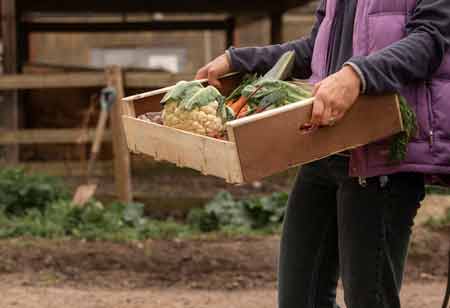Thank you for Subscribing to Agri Business Review Weekly Brief
The Critical Role of Post-Harvest Management in the U.S.
Post-harvest management is crucial for reducing food loss and waste, which affects nearly one-third of global food production. Improving storage systems, transportation infrastructure, technological solutions, and promoting farmer education and collaboration are key strategies to tackle this challen

By
Agri Business Review | Wednesday, October 08, 2025
Stay ahead of the industry with exclusive feature stories on the top companies, expert insights and the latest news delivered straight to your inbox. Subscribe today.
FREMONT, CA: Post-harvest management is a crucial aspect of agribusiness that significantly contributes to reducing food loss and waste. With a growing global population and increasing pressure for sustainable food systems, the efficient handling of crops after harvest has become more important than ever.
Food loss and waste occur at various supply chain stages, from production and harvest to processing, distribution, and consumption. According to the Food and Agriculture Organization (FAO), nearly one-third of all food produced globally—approximately 1.3 billion tons annually—is lost or wasted. Food loss primarily occurs during production, harvest, handling, and storage due to poor infrastructure, inadequate storage facilities, and inefficient supply chain logistics. Conversely, food waste is more prevalent at the retail and consumer levels, driven by over-purchasing, improper storage, and lack of awareness.
One of the key challenges in post-harvest management is inadequate storage facilities, particularly for perishable crops like fruits and vegetables that require optimal storage conditions. The absence of cold storage solutions leads to significant losses. Additionally, inefficient transportation results in physical damage and spoilage, further exacerbating the problem. Many farmers, especially in developing regions, also face limited access to modern technology, which could otherwise help reduce post-harvest losses. Furthermore, market accessibility remains a concern, as farmers in remote areas struggle to promptly transport their produce to markets, leading to spoilage before reaching consumers.
Several strategic solutions have been proposed to address food loss and waste. Improved storage solutions, such as hermetic storage bags, climate-controlled warehouses, and cold storage units, can significantly reduce spoilage. Efficient transportation systems, incorporating better packaging materials and real-time logistics tracking, help minimize damage during transit. Adopting technology, including IoT sensors for monitoring storage conditions and blockchain for supply chain transparency, has also proven effective in reducing losses. Strengthening farmer education on best harvesting, handling, and storage practices can further mitigate post-harvest inefficiencies. Encouraging collaboration among governments, private companies, and non-profits can facilitate infrastructure development and knowledge-sharing initiatives to combat food loss on a larger scale.
Emerging trends in post-harvest management are also playing a transformative role in minimizing waste. AI-driven quality control is utilized for sorting and grading produce, ensuring only high-quality goods enter the supply chain. Blockchain technology enhances traceability, allowing stakeholders to pinpoint and address inefficiencies while increasing consumer trust. The use of biodegradable packaging is extending shelf life while reducing environmental impact. Additionally, circular food systems are gaining traction, repurposing by-products and waste into value-added products like animal feed and bioenergy.
Effective post-harvest management offers several benefits. Economically, it enables farmers and businesses to maximize their returns by reducing losses. From a food security perspective, minimizing food waste ensures more food reaches consumers, addressing global hunger challenges. Environmentally, reducing food loss and waste lowers greenhouse gas emissions and promotes more efficient resource utilization. By implementing innovative strategies and fostering collaboration, stakeholders across the food supply chain can contribute to a more sustainable and efficient global food system.
Post-harvest management is a linchpin for addressing the global food loss and waste crisis. By leveraging modern technologies, strengthening infrastructure, and fostering collaborative efforts, agribusinesses can build sustainable and efficient food systems. The future of post-harvest management lies in innovation and strategic partnerships that ensure food reaches those who need it most while minimizing waste along the way.





